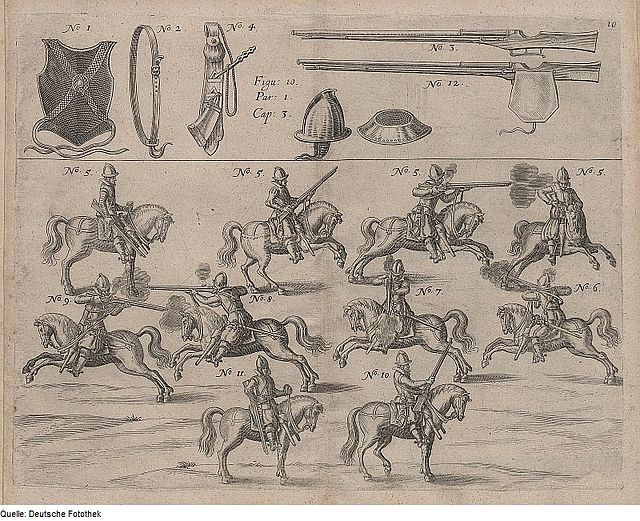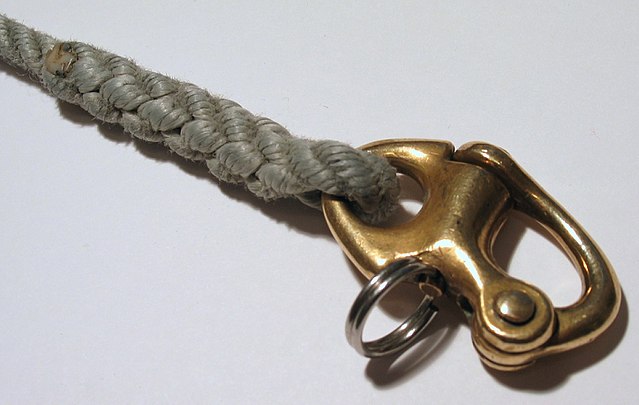A carabiner or karabiner, often shortened to biner or to crab, colloquially known as a (climbing) clip, is a specialized type of shackle, a metal loop with a spring-loaded gate used to quickly and reversibly connect components, most notably in safety-critical systems. The word comes from the German Karabiner, short for Karabinerhaken, meaning "carbine rifle hook" used by a carbine rifleman, or carabinier, to attach his carbine to a belt or bandolier.
Clockwise from top left: D-shaped wire gate D-shaped straight gate oval straight gate pear-shaped auto locker D-shaped screw locker.Center is a standard carabiner rating.
Rather poor depiction of a carabiner attached to a shoulder belt, from Johann Jacob von Wallhausen's Kriegskunst zu Pferdt, 1616
A shackle, also known as a gyve, is a U-shaped piece of metal secured with a clevis pin or bolt across the opening, or a hinged metal loop secured with a quick-release locking pin mechanism. The term also applies to handcuffs and other similarly conceived restraint devices that function in a similar manner. Shackles are the primary connecting link in all manner of rigging systems, from boats and ships to industrial crane rigging, as they allow different rigging subsets to be connected or disconnected quickly. A shackle is also the similarly shaped piece of metal used with a locking mechanism in padlocks.
A carabiner is a type of shackle used in mountaineering.
Different types of shackles. The yellow cable ties indicate the date of the last tool inspection.
A well used shackle.
The shackle key (extended) of a marine multi-tool is used to unscrew threaded shackles.
A snap shackle spliced to a line.






